Development history of gaming handles
Game controller devices (game controllers) must be a familiar item, which is part of the childhood of many of us.When we were young, the gaming handles had a pretty simple design, just plugging in a DVD player or a video game player could sit all day without getting bored.Today, we use multi-function handles and battle games with modern game consoles, in front of a thin and sharp TV screen.In terms of usage purposes, the gaming handles are basically the same, but if analyzing the design and technology, they really have made great strides.To better understand the devices of this 'intense childhood', let's take a look at the game controller's history of formation and development through some typical devices!
Magnavox Odyssey 100 (1972)
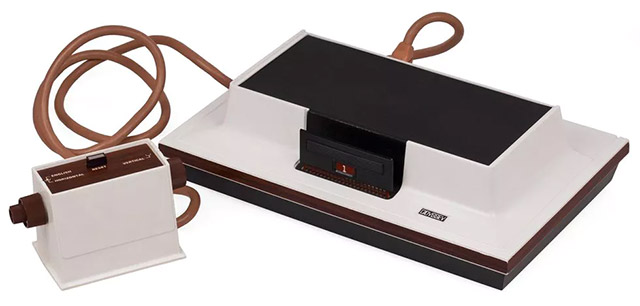
Magnavox Odyssey, released by Magnavox in 1972, is the world's first family gaming machine.Designed by Ralph Baer and first publicized on May 24, 1972, it was sold by Magnavox and its subsidiaries in 1975. The Odyssey uses a printed circuit board card that can be removed. Removable is inserted into an analog slot, allowing players to choose different games.
The Magnavox Odyssey 100 includes a console styled like an ancient stone carve seal, connected to the analog processor with an analog wire.With 2 dials, one for horizontal movement and one for vertical movement, players can play simple motion games like Tennis and Hockey games, in which each player has three buttons. For horizontal movement, vertical motion and ball trajectory adjustment.
Magnavox Odyssey 100 (1972)
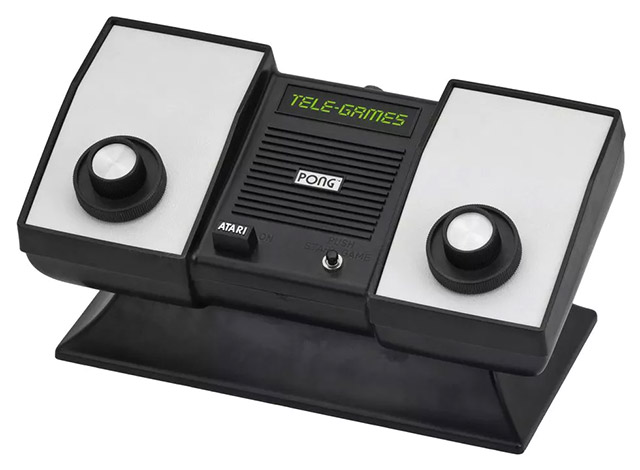
The Atari Home Pong gaming console is a commercial electronic device that integrates one of the most powerful computer chips by the time it was launched by Sears in 1975. The prototype consisted of an attached device. on a wooden pedestal containing more than a hundred connecting wires, and it was eventually replaced by a chip designed by Alcorn and Lee.The chip has not yet been tested and is still being developed before the prototype is built.This chip was completed in the second half of 1974, and at the time, it was the best operating chip used in a commercial product.
The controls are built into the console, allowing players to slide their Pong up and down by rotating a dial.
Fairchild Channel F (1976)
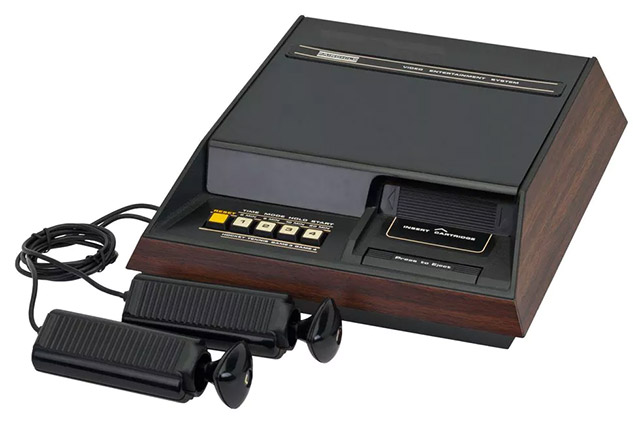
Fairchild Channel F is a family game console released by Fairchild Semiconductor in November 1976 across North America at a retail price of 169.95 USD.It was also released in Japan in October of the following year.Fairchild Channel F is different in that the first game console has ROMs, and microprocessor use.
Fairchild Channel F game handles are shaped like a large handle with a triangular "lid" on the head.This part can be moved and controlled in eight different directions.
Coleco Telstar Arcade (1977)
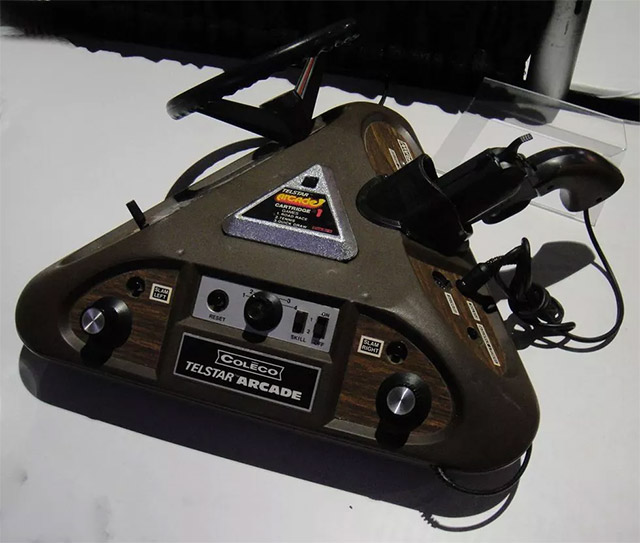
This is a good example of the game console built into the game console.Coleco Telstar Arcade is the last in Pong's line of products called 'Telstar' and produced by Coleco from 1976 to 1978. Unlike other Telstar devices, Telstar Arcade uses the set processor. in a triangular box to allow it to play many different games.
The design of the Arcade panel is a triangle.Disc containers are horizontally connected to the top of the control panel, and contain a microprocessor as well as a small amount of ROM.
RCA Studio II (1977)
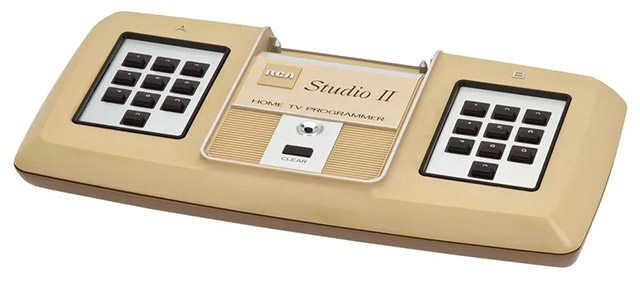
while other second-generation gaming consoles are being introduced with new and daring things, RCA Studio II seems to have taken a step back.Studio II also has no similar joystick or game controller but instead uses two built-in ten-button keyboards in the control panel, compatible with five pre-installed games.The console is capable of creating simple beeping sounds with small changes in tones and lengths.Studio II was not a successful product, it was discontinued after two years of launch.
Atari 2600 (1977)
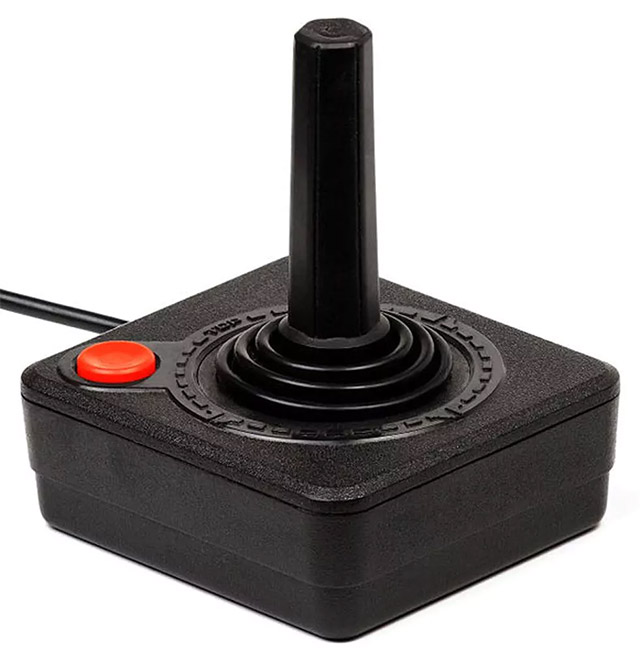
A set of home console games produced by Atari, Inc. and released on September 11, 1977. The 2600 is equipped with a controller system that includes two joysticks and a dial controller for games. sailing or driving.This intoxicating Atari 2600 controller has become the industry standard.
Atari 5200 SuperSystem (1982)
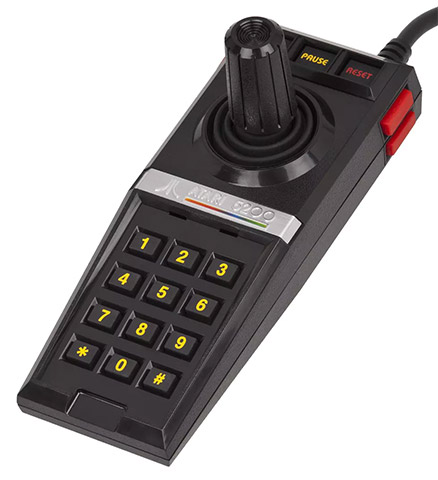
The Atari 5200 SuperSystem, commonly known as the Atari 5200, is a gaming console device introduced in 1982 by Atari Inc, and is a valuable upgrade for the Atari 2600 which was already popular.
The 5200 controllers have a similar joystick Atari 2600 and add a numeric keypad along with start, pause and reset buttons.Another improvement is that the joystick can be swung 360, thereby providing better control than the Atari 2600's eight-way joystick controller.
Casio PV1000 (1983)
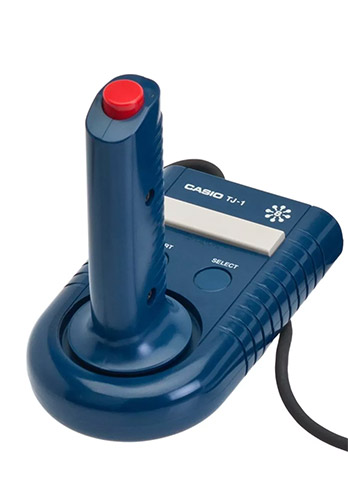
PV-1000 is a family console game produced by Casio and released in Japan in 1983. The PV-1000 is equipped with a Z80A processor and has 2 KB of RAM, with 1 KB for character generator its.It has a basic 256x192 pixel 8-color resolution.The joystick on the Casio PV1000 is similar in shape to the Atari 5200, but is equipped with extra cool 'buttons', like the joysticks of jet fighters.
Nintendo Entertainment System (1983)
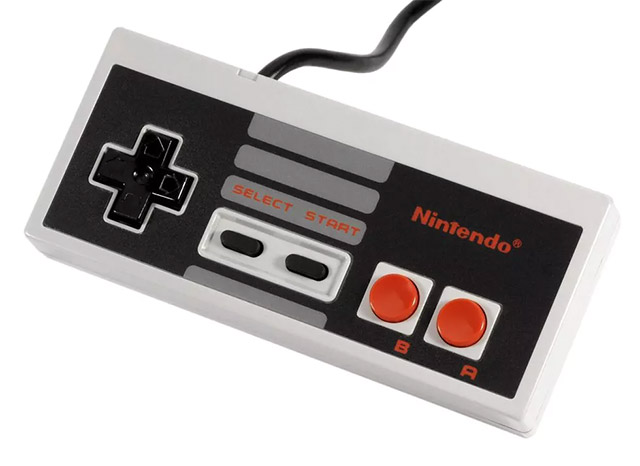
The Nintendo Entertainment System (often abbreviated as NES) is an 8-bit family console game developed and produced by Nintendo.It was originally released in Japan on July 15, 1983 as Family Computer, known as the Famicom.
The NES then fevered worldwide and became one of the most iconic gaming devices of all time.The design for the NES controller is borrowed primarily from Nintendo's handheld Game & Watch series.The NES handle is in the form of a rectangular brick institute with a simple four-button layout: two round buttons labeled "A" and "B", the "START" button and the "SELECT" button include the control side of four directions, and the other side are two small buttons.This design has also proved effective and used to this day.
Sega Master System (1985)
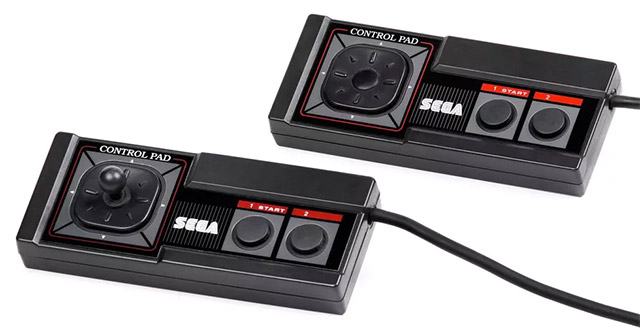
Master System is a third generation family console game produced by Sega.It was first released in 1985 as Sega Mark III in Japan.After being redesigned before its North American launch, the dashboard was renamed the Master System and was released in 1986 in North America, 1987 in Europe and 1989 in Brazil.The birth of the Master System was Sega's attempt to overthrow the dominance of NES in North America and Japan, however, despite high-end graphics and similar controller design, the Master System still can't beat Nintendo's iconic champion.The Master System controller has 2 types, one with control type and one not.
As of 2015, the Master System is the longest-running console game (30 years and continues to be produced), due to its high popularity in Brazil.
Sega Genesis / Mega Drive (1988)
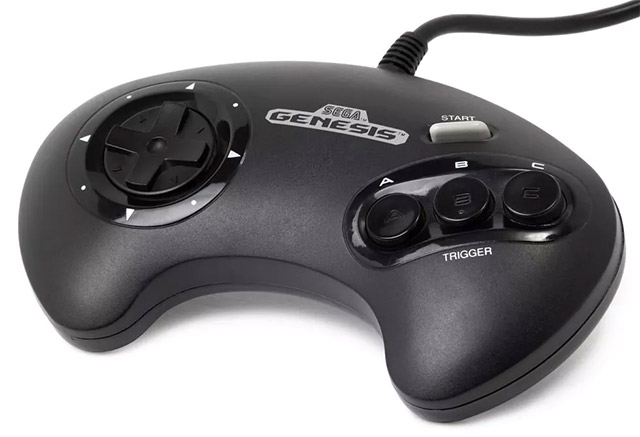
Sega Genesis, known as Mega Drive in areas outside North America, is a 16-bit family game controller developed and sold by Sega.Genesis is Sega's third interface and the successor to the Master System.The Sega Genesis / Mega Drive controller has a number of practical, handy designs, holding hands more than the ones coming from rivals, and looks quite modern with 4 left navigation buttons and 3 A buttons, B, C on the right.
Commodore 64 Games System (1990)

Commodore 64 Games System was released in December 1990 because Commodore entered a growing market that was booming and dominated by Nintendo and Sega Europe, so the Commodore 64 quickly took heavy losses.However, one plus point not to mention on the Commodore 64 is the excellent design of the joystick: very easy to manipulate and especially for a very good grip.In addition it is also adjustable omnidirectional.
Super Nintendo Entertainment System (1990)
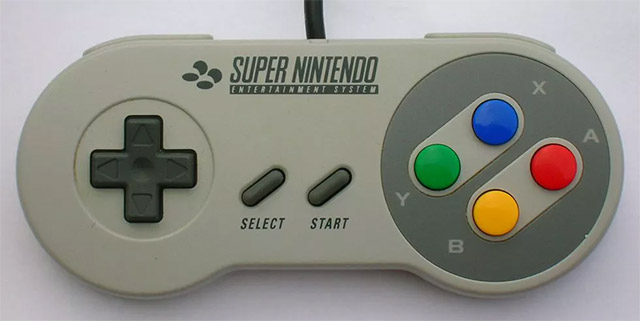
Super Nintendo Entertainment System (abbreviated as Super NES or SNES, and shortened to Super Nintendo) is a 16-bit game controller developed by Nintendo released in 1990 in Japan and South Korea.
SNES is an improvement, launched to continue the success of the NES earlier and it has outperformed expectations.The SNES handle design was once again a resounding success with four buttons under each thumb and hip buttons for the player's index finger - a very clever layout.Thanks to the resounding success, SNES is known as a legend, a dream and a part of many people's memories.
Atari Jaguar (1993)
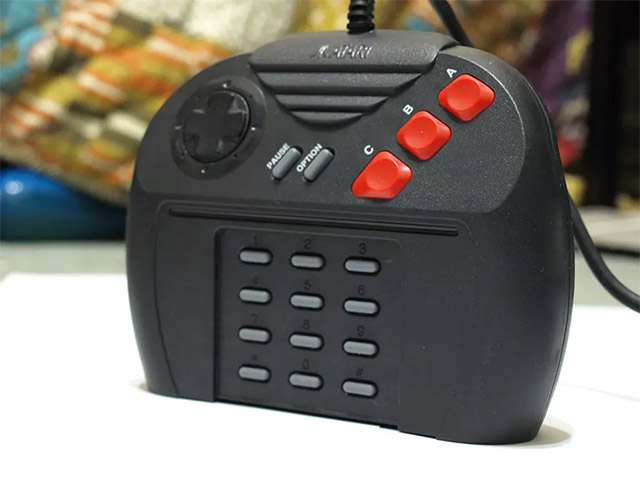
Atari Jaguar is a family game console developed by Atari Corporation.Atari Jaguar is the sixth generation console developed under the Atari brand, originally released in North America in November 1993. It is also the last Atari console to use physical media.The highlight of the Atari Jaguar controller is the 'all-button' button design.
Neo Geo CD is SNK Corporation's second family game controller, released on September 9, 1994. This is an expensive handle that gives an interesting control experience, only one control key. hug the familiar thumb but nothing difficult.Even creating comfort after you've played the game for a few hours.
Sony PlayStation (1994)
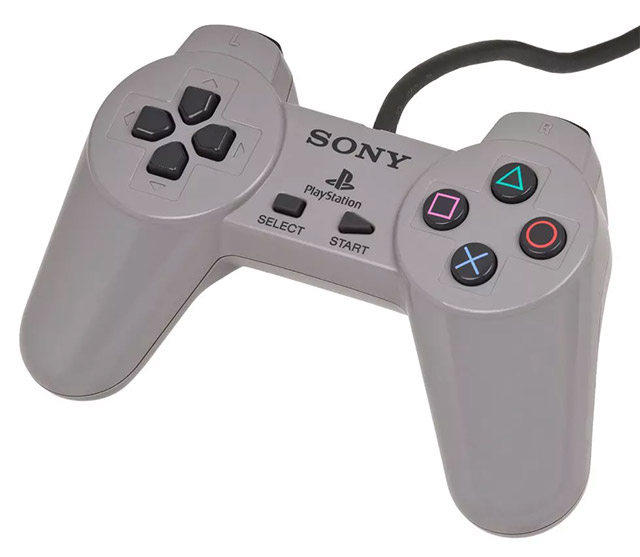
PlayStation (officially abbreviated as PS, and commonly known as PS1 or its codename, PSX) is a family game console developed and marketed by Sony Computer Entertainment.The PS1 commercial version was released on December 3, 1994 in Japan.It can be said that Sony's PlayStation controller is a great design.It was released in the same year as Sega Saturn, and made Sega's six-button controller look like a "tired old dinosaur".
One of the key elements of PlayStation's success is Sony's approach to third-party developers.While Sega and Nintendo took an independent approach, focusing on first-party development.By the end of 1996, there were about 400 games developed for the PlayStation, compared to about 200 games developed for Saturn and 60 for Nintendo 64.
Apple Bandai Pippin (1995)
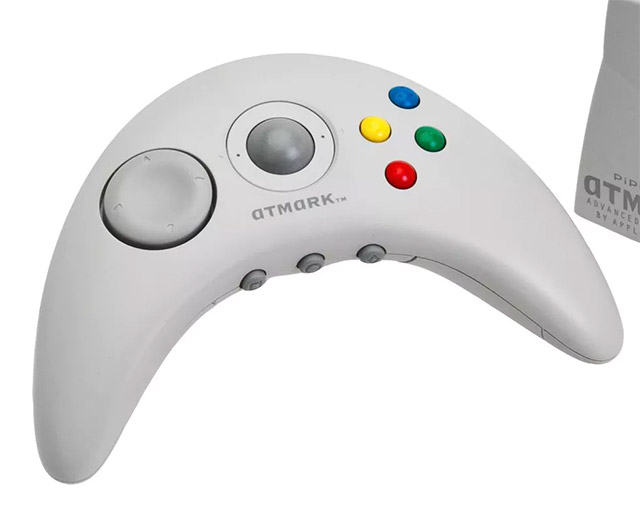
Apple Bandai Pippin, stylized PiP PiN, is a multimedia technology console, designed by Apple Computer.This console is based on the Apple Pippin platform - a branch of the Apple Macintosh platform.However, Apple's console only existed for a short time, thanks in part to its heavenly starting price: 599 USE.To be fair, Pippin's handle has a beautiful and unique design.Another plus is that there is a circular navigation roller in the center of the handle, but the buttons are not too outstanding.
Nintendo 64 (1996)
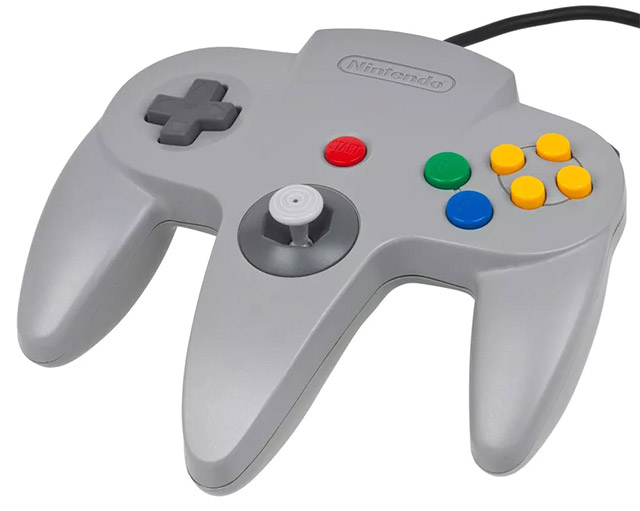
The stylized Nintendo 64 is NINTENDO64 and abbreviated as N64, which is Nintendo's third-generation family game controller for the international market.Named after the 64-bit central processor, it was released in June 1996 in Japan.
When Nintendo announced the successor to SNES, no one thought that this console came with a 'weird' controller like this.Three prongs, equipped with a trigger button and two hip buttons, a D-pad and a middle joystick.In terms of usability, this design also gives a pretty good experience.
Sony PlayStation DualShock (1997)
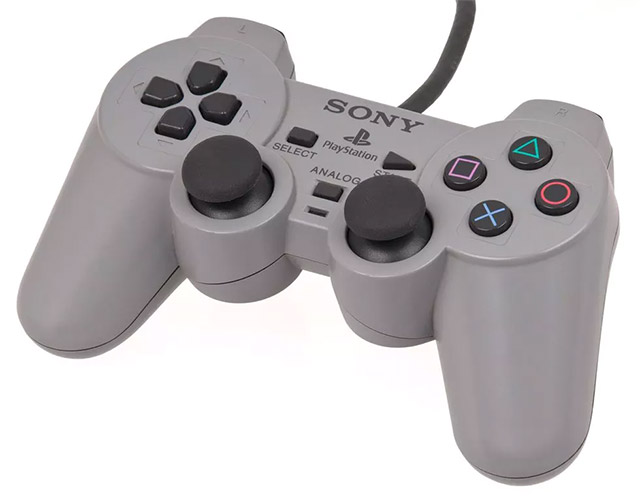
DualShock is a line of vibration-feedback and analog-controlled gamepad products developed by Sony Interactive Entertainment for the PlayStation system.DualShock was introduced in Japan in late 1997 and launched in North America in May 1998. It was first introduced as an extra peripheral for the original PlayStation, an updated version of the controller. PlayStation
Are you looking for the greatest gaming handle of all time?DualShock is a brilliant name.DualShock has become the norm for the design of later generations of gaming handsets.Next-generation devices are just trying to perfect Sony's design.Comfort is the most appreciated factor on the handle of DualShock.By 2008, more than 28 million DualShock controllers were sold worldwide.
Sega Dreamcast (1998)
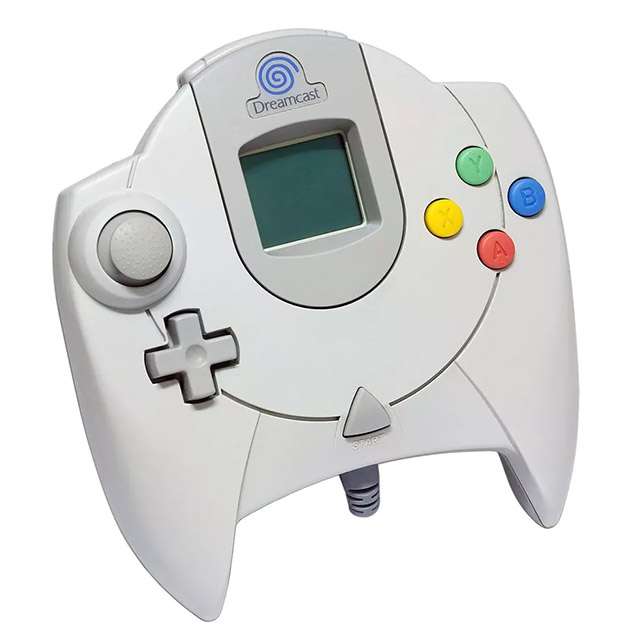
Dreamcast is a family console game released by Sega on November 27, 1998 in Japan, September 9, 1999 in North America and October 14, 1999 in Europe.Dreamcast is Sega's last console, marking the end of the company in the console game market after 18 years.
Dreamcast is the device that opens the 6th generation of console games.However, the Dreamcast handle design is not too outstanding and perhaps this is the reason it is lagging behind competitors.
Nintendo GameCube (2001)
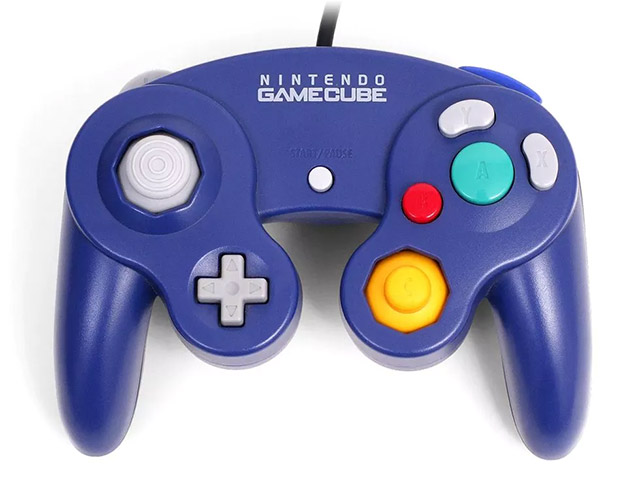
The GameCube was released in 2011 at the Get Edition and served as the successor to Nintendo 64 and competed directly with Sony's PlayStation 2 and Microsoft's Xbox.GameCube is Nintendo's first console to use optical discs as its primary storage medium.These disks are in miniDVD format.
The highlight on the Nintendo GameCube handle is its subtle change based on the inspiration from Sony's Dualshock.While Nintendo seems to admit that the traditional 'steering wheel' design provides a better gaming experience on the N64 controller, designers feel that the left joystick is placed directly under the thumb, Keep it in line with the main buttons to re-create a better user experience.Moreover, the colors of these handles are also very eye-catching.
Microsoft's Xbox (2001)
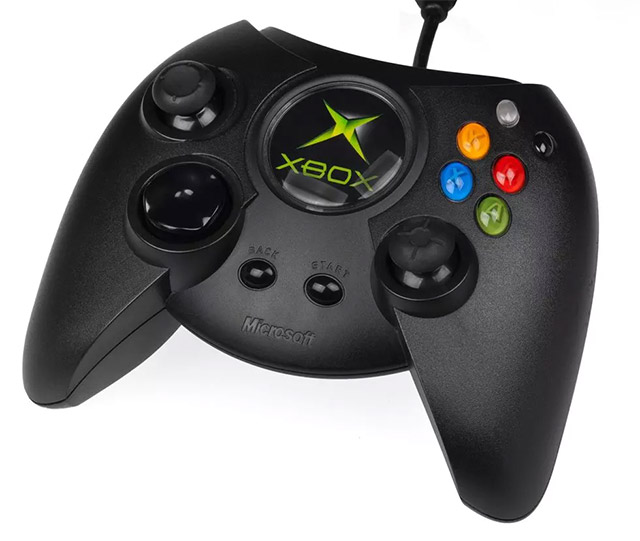
Xbox is a family game console produced by Microsoft.It was released on November 15, 2001 in North America.The original Xbox handle has a rather large design, has two analog bars, a tension table, two analog trigger buttons, a Back button, a Start button, two accessory slots and six 8-bit analog action buttons (A - green, B - red, X - blue, Y - gold, and 2 small black and white buttons on top, it was awarded the Game Informer "Blunder of the Year" in 2001, Guinness record for the player The biggest game in Guinness World Records Gamer Edition 2008, and ranked as the worst video game controller ever by IGN editor Craig Harris.
Nintendo Wiimote and nunchuck (2006)
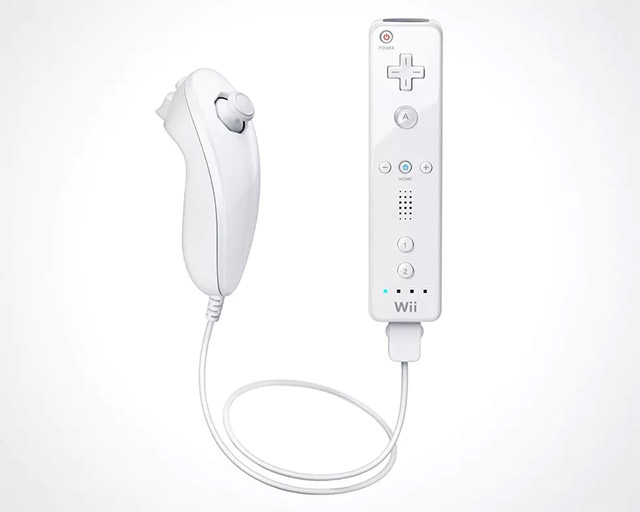
The Wiimote, is the main controller for Nintendo's Wii console.One of the main features of the Wii Remote is its motion sensing capability, which allows users to interact and manipulate items on the screen through gesture recognition through the use of accelerometer sensor technology and optics.Another feature is its scalability through the use of bundled accessories.The accessories that come with the Wiimote are called Nunchuk.This is one of the best-selling gaming handles of all time.It has many unique features whereby gamers can interact with the game better.All necessary control requirements are available: joystick, cursor, lever.
Microsoft Xbox 360 (2005)
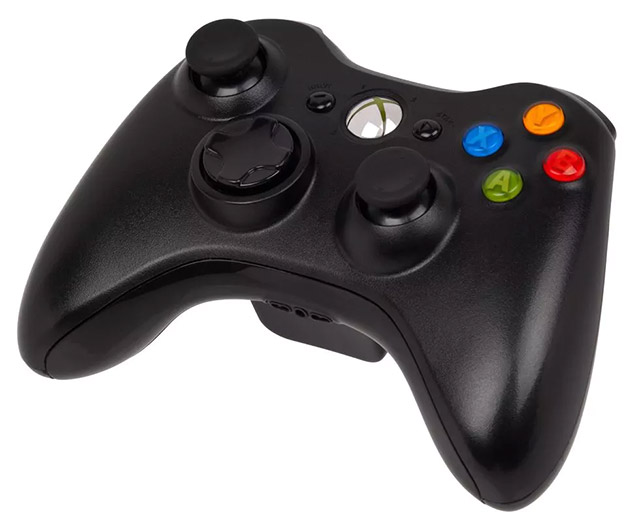
Xbox 360 is a game console developed by Microsoft.As Xbox 2001's successor, it is the second generation of the Xbox series.It competes with Sony's PlayStation 3 and Nintendo's Wii, and is part of the seventh generation console game.The Xbox 360 was officially announced on MTV on May 12, 2005, with details on the release and was released at the end of the month at the 2005 E3 fair.
In fact, the first-generation grip limitations such as oversize have been significantly overcome by Microsoft, making the Xbox 360 a far more experienced device.
Microsoft Kinect (2010)
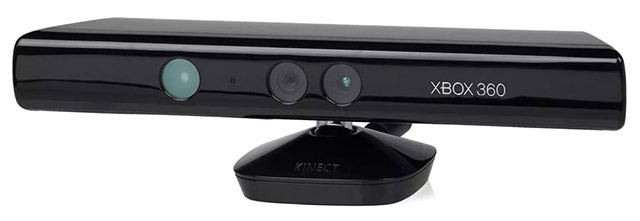
Keeping the record for "best-selling consumer electronics," Kinect is just one of the extra devices that Microsoft has released for the Xbox 360 in an effort to regain market share from Nintendo's Wii.
Kinect is a line of motion sensors manufactured by Microsoft for Xbox 360 and Xbox One gaming consoles and Microsoft Windows computers.Based on a webcam-style utility device, it allows users to control and interact with consoles or their computers without a controller, just through the natural user interface using gestures and speaking order.Kinect is one of the most important controllers ever built by Microsoft.
Nintendo Wii U Gamepad (2012)
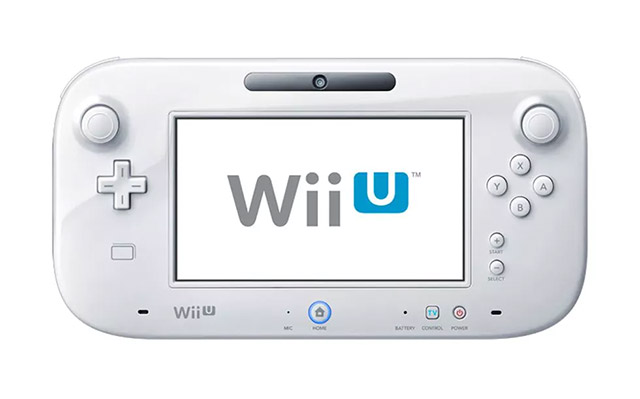
Wii U is the successor of the Wii.This console game was released in November 2012 and was the first eighth generation video game console.At the time of its launch, it competed directly with Sony's PlayStation 4 and Microsoft's Xbox One.
Wii U is Nintendo's first console that supports HD graphics.The main controller of the system is Wii U GamePad, with touch screen and incorporates navigation buttons, joysticks and task buttons.
Microsoft Xbox One (2013)
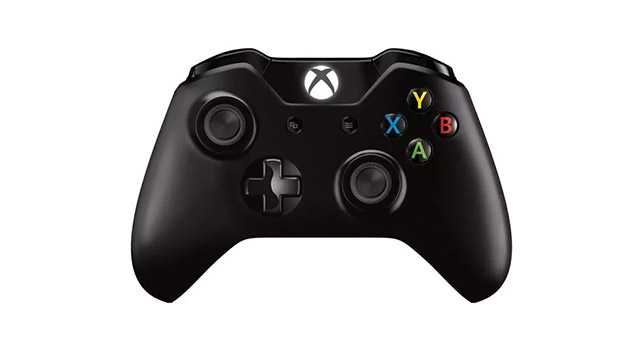
Xbox One is the eighth generation family console game and the successor version of Xbox 360, released in November 2013. Microsoft has spent a lot of time researching a device that can replace Xbox 360 and they have achieved certain successes.In terms of design, there is not much difference, but the Xbox One comes with a lot of tweaks.The battery has been omitted, the rumble feature has been enhanced.
- How to set up the Xbox One gaming console on Windows 10
Sony PlayStation DualShock 4 (2013) 
PlayStation 4 (PS4), a name that is too famous, is there anything more than my predecessor is PS3?First, the weight has improved markedly, the design is more sleek, and the feeling of grip is more comfortable.In addition, one of the most important additions is an integrated capacitive touch pad.This touch-sensitive touch pad can support gamers, making their operations much easier.
Xbox One Elite (2015)
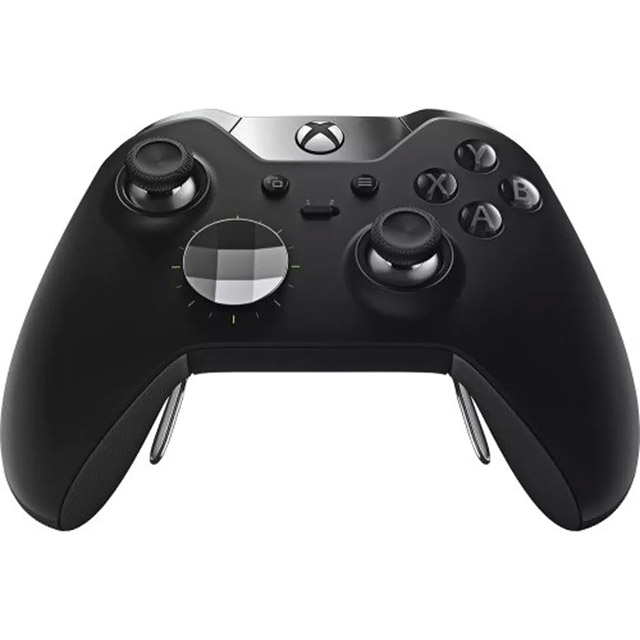
It could be said that the Xbox One Elite redefined the gaming handle design.Many people said that after using the handle on the Xbox One Elite, they no longer wanted to play console games and most PC games with anything other than Elite.It is made of high quality materials, and you can feel comfort right from the first time you take it.The plastic pieces give a smooth feel, the rubber grip on the back provides enough friction to help you keep the gamepad safe without having to hold it tight.The buttons are also great.When the button is the best, you can feel the firmness and good bounce.Touchpad is also very cool.The biggest plus of the Xbox One Elite handle supports wireless connectivity, which maximizes the mobility of gaming on home devices.
Above are the brief sketches of the development history of game console devices as well as game handles.Wishing you all for your favorite gaming devices!
See more:
- The best controllers for playing PC games
- Top 6 best gaming mice for PC gamers
- The best gaming laptops
- Top 10 best handheld game consoles 2018
You should read it
- By the next generation, the cloud game will replace the game console
- Build your own awesome gaming machine like PlayerUnknown's Battlegrounds
- The Chinese will spend 1.5 billion dollars on gaming consoles in 2023
- The 5 best customizable game controllers of 2023
- Fix Xbox One game console not working
- How to turn Android device into a retro gaming machine
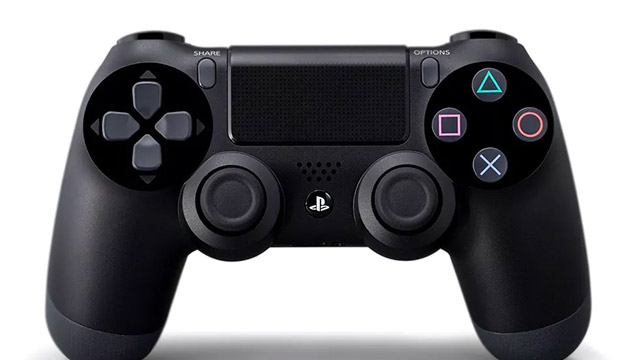
 Top 10 best gaming screens under 5 million
Top 10 best gaming screens under 5 million Software to check the read and write speed of SSD hard drives, HDD best
Software to check the read and write speed of SSD hard drives, HDD best What is the CPU?
What is the CPU? Criteria when choosing to buy SD memory card
Criteria when choosing to buy SD memory card 7 best cheap Bluetooth speakers
7 best cheap Bluetooth speakers Learn about Kindle Paperwhite book reader
Learn about Kindle Paperwhite book reader